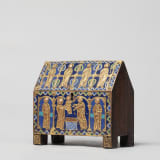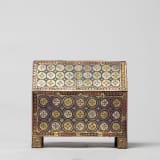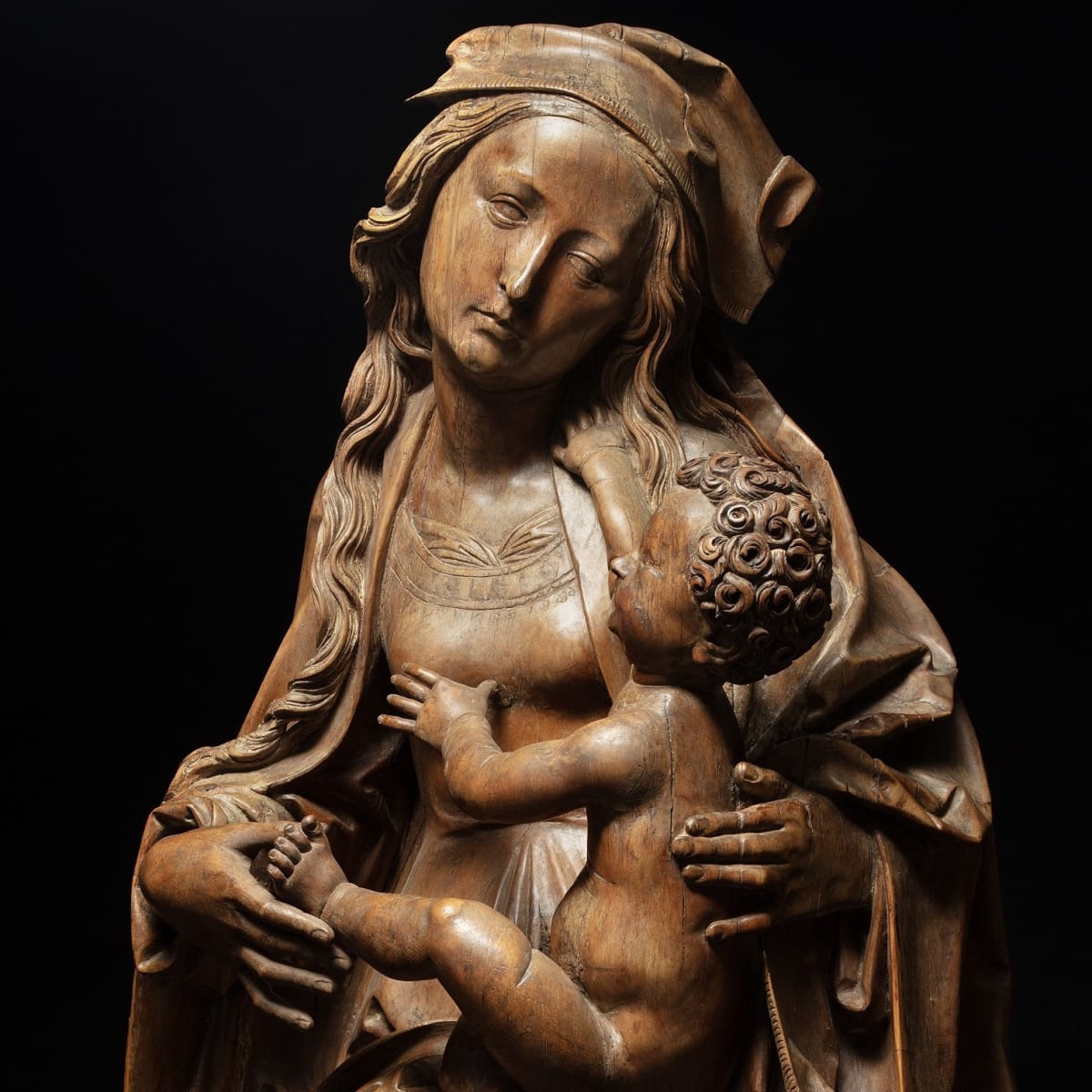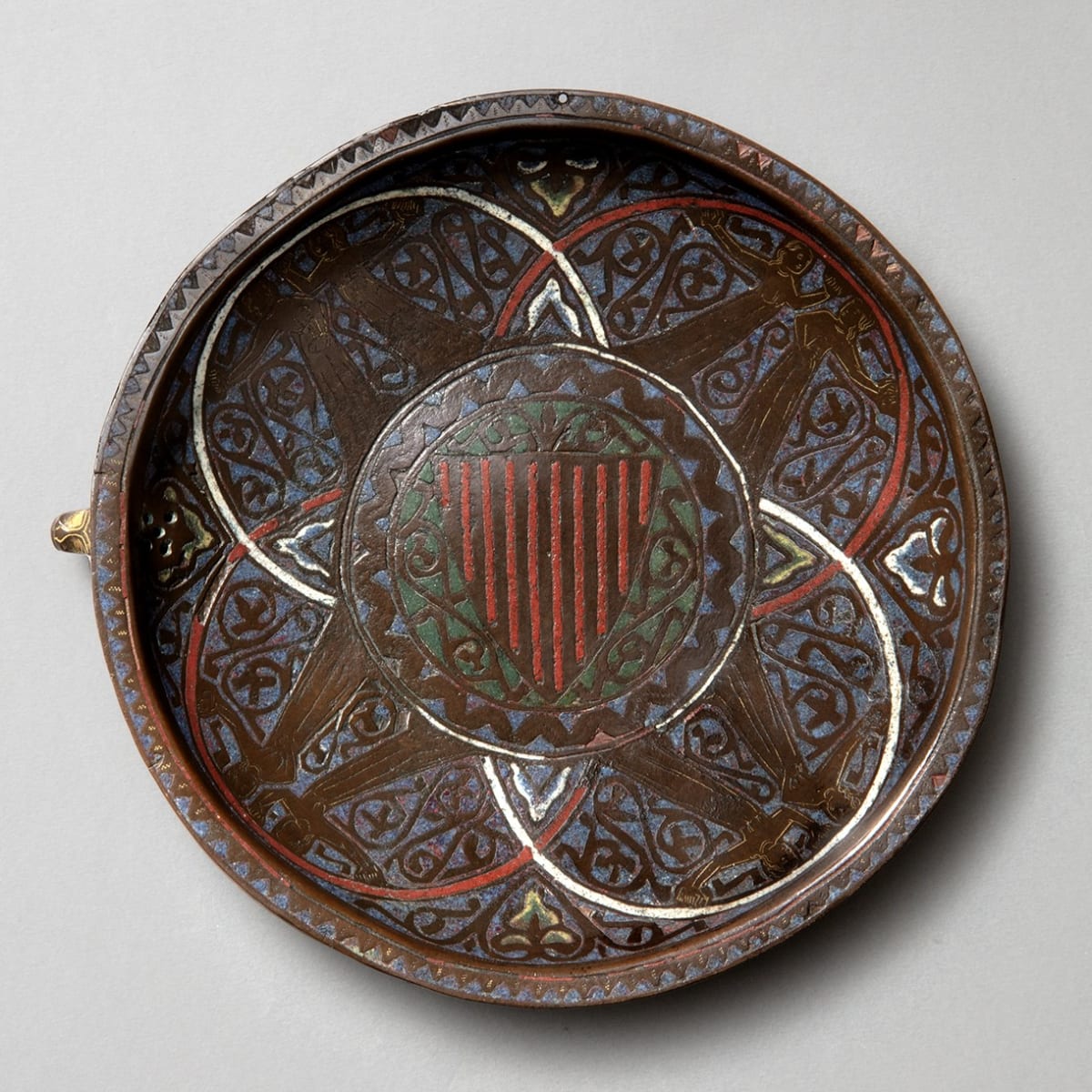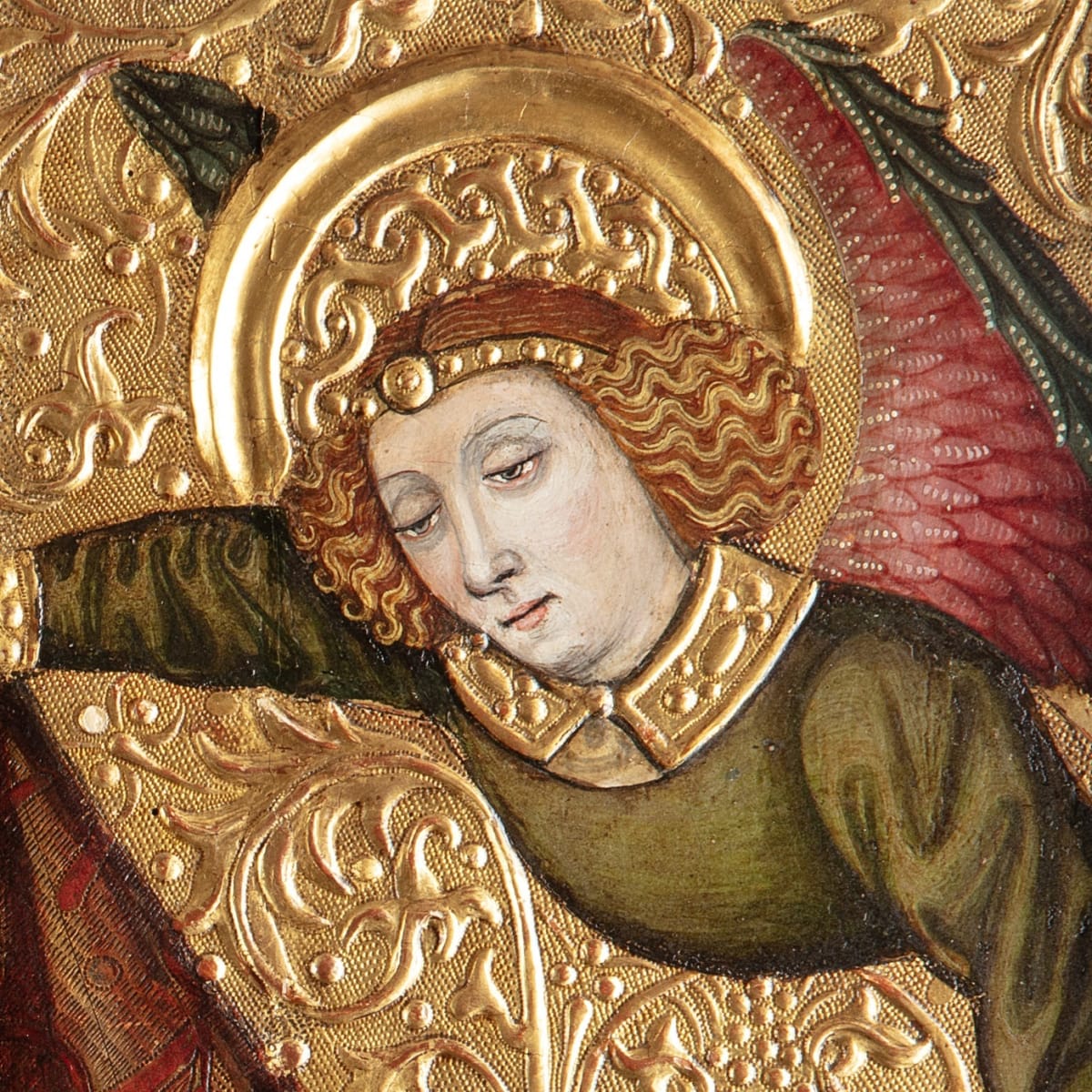


Reliquary chasse with the Presentation at the Temple
On the front face of this very early Limousin reliquary chasse are images of the Presentation in the Temple accompanied by six haloed figures who can be identified by their uniform attributes of books as Apostles. Only seven chasses depicting the Presentation are known to have come down to us, and are now split between museums in Berlin, St Petersburg, Altamura, Siegburg, Rouen and Paris. The event is described in the Gospel of Luke (2:22–40), which recounts that Mary and Joseph took the infant to the temple in Jerusalem forty days after his birth in order to complete Mary's ritual purification after childbirth, and to perform the redemption of the firstborn son in obedience to the Torah (Leviticus 12, Exodus 13:12–15). Upon bringing Jesus into the temple, they encountered Simeon, an elderly man who had been promised that ‘he should not see death before he had seen the Lord's Christ’ (Luke 2:26). The infant Christ Child’s singular importance within the assembled group is established succinctly by the finely scalloped engraving that enlivens his golden halo, and his active participation in the event by the blessing gesture which he offers to the figure of Simeon (who appears to the right of the blue cloth-draped altar table at centre). The whole scene takes place within an arched space ornamented with slender columns, with ornate palmette leaves punctuating the spaces between the four Apostles standing on the roof plaque above. The reverse face of the chasse incorporates two plaques with a repeat pattern of rosette-like ornaments against a deep blue background.

